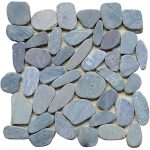Unveiling the Beauty of Cultured Travertine A Comprehensive Guide

Introduction

Travertine is a natural stone that has been prized for its beauty and durability for centuries. This unique stone is formed from mineral deposits in hot springs and limestone caves, resulting in a distinctive appearance characterized by intricate patterns and earthy tones. In recent years, a new innovation has emerged in the world of design and construction - cultured travertine. This engineered stone offers all the aesthetic appeal of natural travertine with added benefits in terms of consistency, strength, and versatility. In this comprehensive guide, we will delve into the world of cultured travertine, exploring its origins, properties, uses, and advantages over natural stone alternatives.
Origins of Cultured Travertine
Cultured travertine is a man-made product that replicates the look and feel of natural travertine through a combination of natural materials and modern technology. The process begins with the selection of high-quality limestone, which serves as the base material for the cultured travertine. This limestone is carefully processed and mixed with resins, pigments, and other additives to create a moldable compound that mimics the appearance of natural travertine. Through a series of casting, curing, and finishing techniques, the cultured travertine is formed into slabs, tiles, and other custom shapes that can be used in a variety of applications.
Properties of Cultured Travertine
One of the key advantages of cultured travertine is its consistency in color, pattern, and texture. Unlike natural stone, which can vary significantly from one piece to another, cultured travertine offers a uniform appearance that is ideal for large-scale projects where continuity is essential. Additionally, cultured travertine is available in a wide range of colors and finishes, allowing for greater customization and design flexibility. From classic ivory and beige tones to more contemporary shades like grey and black, cultured travertine can be tailored to suit any aesthetic preference.
In terms of durability, cultured travertine is engineered to be highly resistant to scratches, stains, and heat damage. The addition of resins and sealants enhances the stone's strength and longevity, making it an ideal choice for high-traffic areas such as kitchens, bathrooms, and outdoor spaces. Cultured travertine is also less porous than natural stone, reducing the risk of water absorption and mold growth. This makes it easier to clean and maintain, ensuring that it retains its beauty and functionality for years to come.
Uses of Cultured Travertine
Cultured travertine can be used in a wide range of residential and commercial applications, thanks to its versatility and aesthetic appeal. In interior spaces, cultured travertine is commonly used for flooring, countertops, backsplashes, and accent walls. More hints and warmth create a welcoming ambiance that is perfect for living rooms, dining areas, and bedrooms. Cultured travertine can also be used to create custom furniture pieces such as coffee tables, side tables, and fireplace surrounds, adding a touch of elegance and sophistication to any room.
In outdoor settings, cultured travertine is an excellent choice for patios, pool decks, walkways, and landscaping features. Its natural resistance to UV rays and weathering makes it ideal for withstanding the elements and maintaining its appearance over time. Cultured travertine can also be used to create outdoor kitchens, fire pits, and water features, enhancing the beauty and functionality of outdoor living spaces. With its timeless appeal and durability, cultured travertine adds value and curb appeal to residential properties and commercial developments alike.
Advantages of Cultured Travertine
There are several distinct advantages to choosing cultured travertine over natural stone alternatives. One of the primary benefits is cost savings - cultured travertine is generally more affordable than natural travertine, making it a budget-friendly option for homeowners and designers. Additionally, the manufacturing process of cultured travertine allows for greater control over quality and consistency, ensuring that each piece meets strict standards for durability and aesthetics. This consistency also simplifies the installation process, as contractors can work with uniform pieces that fit together seamlessly.
Another advantage of cultured travertine is its eco-friendly nature. By using recycled materials and reducing waste in the manufacturing process, cultured travertine helps to minimize its environmental impact compared to natural stone extraction. Cultured travertine also requires less maintenance and sealing than natural stone, saving time and resources in the long run. With its durability and longevity, cultured travertine is a sustainable choice that can withstand the test of time while preserving the beauty of natural stone.
Conclusion
Cultured travertine offers a compelling combination of beauty, durability, and versatility that makes it a popular choice for interior and exterior design projects. With its consistent appearance, strength, and ease of maintenance, cultured travertine provides a cost-effective and sustainable alternative to natural stone. Whether used in residential homes, commercial buildings, or outdoor landscapes, cultured travertine adds a touch of timeless elegance and sophistication to any space. As the demand for high-quality building materials continues to grow, cultured travertine stands out as a reliable and stylish option for those seeking to enhance their surroundings with the beauty of natural stone.
